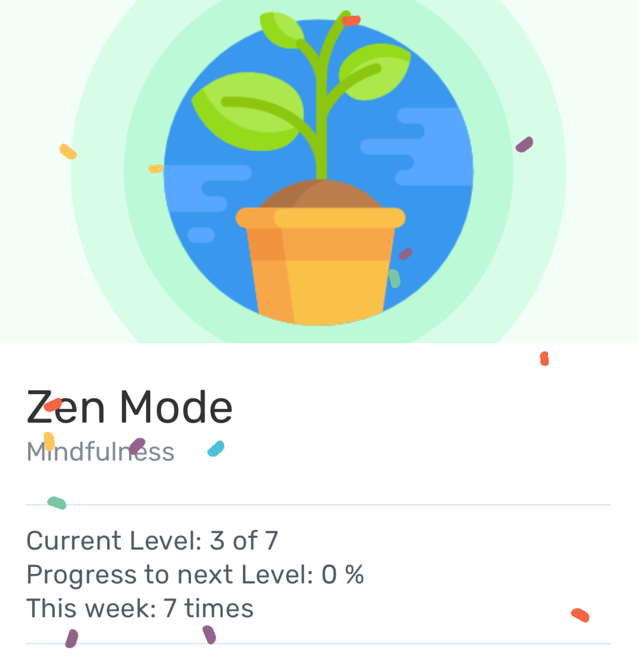Healthy Habits: What are Habits, and how to build them?
In this article, we will answer some common concerns about building habits. We will start from common frameworks such as The Habit Loop, The Fogg Behavior Model, and The Hook Model. Each considers the habit building factors from motivation and routines to rewards. From there, we break down how Healthzilla addresses each of those factors to help you build healthy habits!
We all know some of our obvious habits. They’re simply the things that we do. In terms of definitions from psychology, habits are repeated behaviors that require little or no thought. By that definition, a lot of our daily activities would count as habits, good or bad. So clearly, we humans are well equipped to maintain habits. But what if you want to start new habits?
How do you build Habits?
That’s hard. Research has shown that 80% of New Year’s resolutions fail [study link]. This shows that in order to build new habits that last, we need to hack the system. But, what is the system, actually? The research for Habits goes across several scientific fields, from psychology to sociology. Over decades of studies, there are many different descriptions of the underlying system for habits.
Habit = Cue + Routine + Reward (Habit Loop)
One of the more often cited systems is called the Habit Loop and originates from research at MIT and popularized by Charles Duhigg in his bestselling book The Power of Habit.
Behavior = Motivation + Ability + Prompt (Fogg Behavior Model)
The BMAP model by Dr. BJ Fogg, founder of the Behavior Design Lab at Stanford University, has become quite widely cited within the health & fitness community. Compared to the Habit Loop which assumes an active process of habit formation, BMAP also addresses the prerequisite context for habit formation through motivation and ability.
Habit = Trigger + Action + Variable Reward + Investment (The Hook Model)
A more contemporary take on habit formation, especially within the context of technology, was in a book by Nir Eyal, published in 2014. This approach has been utilized widely by many popular apps and social networks, in particular, to “hook” their users into building a habit of using the service.
How does Healthzilla help with Habits?
The core idea with Healthzilla is to tackle all of the main elements of habit formation, to remove possible excuses and pitfalls for a wide variety of situations. Without building off a single framework, we looked to design a user journey that caters to several types of user personas, instead of forcing everyone down one path.
I’m motivated by tracking my own routine.
I’m motivated by trying new things.
I’m motivated to improve myself.
I’m motivated by my health goals.
Of course, these aren’t mutually exclusive, and most may identify with several of these. In the design of the app, we’ve catered to the possibility of users having these different reasons for starting the journey.
Ability: Automated analysis of your Habits
The core of Healthzilla’s solution to building healthy habits is simply making them easy to track. This removes a large part of the friction in people’s ability to start new habits. How? We rely on data already produced by millions of wearable devices and apps out there in the market. This data gets captured as users access popular workout trackers or programs through devices like the Apple Watch, or popular apps like Strava. The same goes for popular categories like meditation with Calm and tracking your diet with MyFitnessPal. With the user’s permission, we can access this data through API’s and analyze it on their behalf.
The trick here is that we turn all that raw data on your devices into habits. Our starting point is to measure frequency of specific activities occurring within a 21-day window. Why 21 days exactly? While the range of habit formation periods cited in literature varies from a few days to many months, we went for an often cited number that matches three weeks. For the type of habits we measure, it captures a repeated pattern without stretching the period too far out. To break down the habit formation period further, we introduced gamification mechanics to capture progress within that 21-day window.
Screenshots of habits read from wearables data automatically.
So what kind of habits can we measure?
Habits currently available on Healthzilla: 10K+ Steps, Sports, Cardio, HIIT, Strength Training, Stretching, Fasting, Breathing Exercises, Meditation, Mobility Training, Measure Weight, Measure HRV, Sleep 7+, Count Calories, and Calorie Deficit.
Notice that several habits incl. steps and sleep actually include a threshold. Meaning simply sleeping isn’t a healthy habit, it’s a given. Healthy sleep only kicks in once you hit a minimum of 7 hours, which is heavily backed by research.
Motivation and Ability: Discover Habits for your Goal
While we might assume most users downloading an app from the Health & Fitness category already have some motivation to improve, we want to make sure we direct the right content to each user. That’s why the first task for any new user is to choose a Goal. There is some overlap and interplay between habits and goals in research. Generally speaking, most people think of habits as daily or weekly activities, whereas goals tend to be further out in time. You might therefore think of your goal as habits you want to have in the future.
Goals currently available on Healthzilla: Live Forever (Longevity), Lower Stress (Stress Mgmt.), Build Muscle (Strength), Be More Active (Activity), and Lose Weight (Weight Loss).
Each of these goals maps to a set of habits from the list above, that are relevant to the goal. This allows the user to establish priorities in trying out and exploring new habits. We’ve built a database of the relevant research around each habit, to help build up the initial motivation high enough for the user to try it out.
We display habits for your goal at the top, allowing you to focus on building the right habits.
As an example, if you wish to lose weight, then the best way to not only lose weight but keep it lost is to build habits that support maintaining healthy weight. This might seem logical, but is quite contradictory to the popular wisdom of focusing on simply shaving pounds off the scale each week. This focus purely on the results doesn’t build the right foundation for maintaining weight, leading to a “yo-yo diet” where most of the weight, if not more, comes back. We hope to change that pattern through focus on habits over results.
Rewards and Triggers: Gamification of Habit building
Thus far we may have been able to get new users interested and engaged in their current habits, but now we need to ensure they stick to it long enough for the habit to form. The core principle here is gamification, which is just introducing game-like elements like scores and levels to provide users a tangible sense of progress and accomplishment. This is particularly important in health, as most outcomes in the form of results will take months in many cases, whether you’re losing weight or building muscle. Introducing rewards to keep you on that path before the results show up in the mirror is key.
The way it works in Healthzilla is that each habit comes with a level. The level is just an indicator of how many times per week you typically perform this habit. For example, if you went for a run two times in the past three weeks, is that really a habit yet? In Healthzilla, you would still be in Level 0, until your average per week is above 1. Remember, we analyze habits over the past 21 days.
The little mental high-five associated with establishing your habits is a key reward mechanism.
This simple system then allows us to congratulate you on reaching new levels for each of your new habits. As we can read your habit data in the background, you will start seeing notifications as you introduce new habits and increase your commitment towards existing ones. The little confetti explosion that greets you in the app is a small but important gesture. The small psychological reward you get from a positive association is a key driver of habit formation.
Routines and Cues: Your weekly schedule of Habits
While it may be easy to try new things, it is equally easy to drop off before the habit is fully formed. To keep users aware and engaged with their habit commitments, the main screen of the app is a list of your active habits. Each habit shows you with empty dots your typical weekly frequency for that habit. Like going to the gym once, or even daily meditation. As the week progresses, you should be filling in those dots through your routines. This simple mechanic has been a tremendous driver of change with the Apple Watch activity rings. There is a strong psychological need to fill in the rings each day, by taking some extra steps. We want to expand the scope and time-horizon of that cue to the week, to gradually build up your healthy habits.
Your weekly routine with a simple visualization to remind you of progress during the week.
Further, to make the recommendations contextual, we use our proprietary Stress Score to indicate which habits are best suited for today. The additional benefit besides convenience is to ensure you don’t do too much. Motivation tends to peak around New Year’s, and the risk is that doing too much too quickly will burn you out. Therefore tracking your body’s response to your habits is an important aspect, to ensure you can not only try new habits but sustain them longterm!
Investment: The 100-Day Challenge
The final piece of the habit puzzle is commitment. For those users motivated to change their life in one fell swoop, rather than gradually, we offer the 100-Day Challenge. The challenge is specific to your goal, and the habits that are matched to that goal. We have preset a high target level for each of those habits, with a view that reaching the challenge should be, well… challenging. Finishing the challenge should make reaching your goal near automatic. Again, using weight loss as the example, if you’re measuring your weight every single day of the week, eating a calorie deficit, and fasting overnight, there’s simply no physical opportunity for you to NOT lose weight. The 100 days also pushes beyond the default 21 day formation period to really cement these habits into your life. This should ensure long-term commitment, as habits that form are actually hard to give up!
Now enough reading, and go start building some habits! We hope Healthzilla can be a tool for good, and help you build those healthy habits.
Icons made by Freepik from www.flaticon.com




